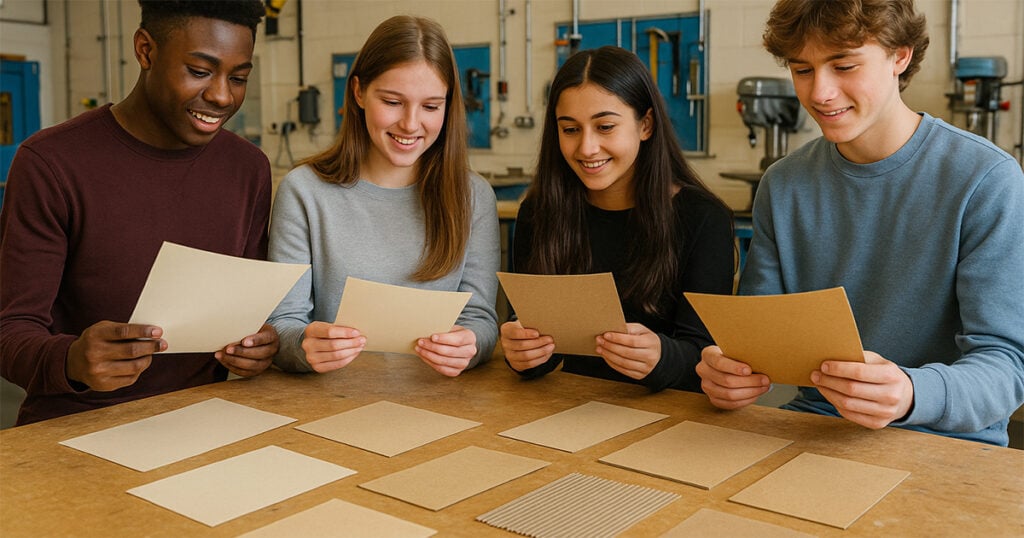Design & Technology students often use a range of paper, cardboards, and other lightweight materials used in graphic products and architectural models. This article summarises the properties, stock forms, and common uses of these materials. It concludes with sample examination questions from the Cambridge IGCSE and AS/A Level syllabus.

Common properties of paper, card, and other lightweight materials
- Readily available
- Cheap compared to most other materials
- Accept many different adhesives and finishes (easy to draw, paint, or print on)
- Easy to cut, score, and fold, requiring less complex machinery and using less energy than plastic moulding or metal fabrication, often with faster assembly (reducing production costs and energy consumption)
- Can have multiple layers with a cheaper grade in the interior
- Common forms: A5, A4, A3, A2, A1 etc
- Good for the environment in general, with some exceptions
PAPER, CARD & OTHER LIGHTWEIGHT MATERIALS
Copier paper
Properties
Uses
Cartridge paper
Properties
Uses
Cardboard
Properties
Uses
Corrugated card
Properties
Uses
Bleached card
Properties
Uses
Mount board
Properties
Uses
Duplex card
Properties
Uses
Recycled cardboard
Properties
Uses
Moulded paper pulp
Properties
Uses
Has same pros / cons as recycled card above
Foamboard
Properties
Uses
Corriflute sheet
Properties
Uses
Self-adhesive vinyl
Properties
Uses
NOTE: Static cling vinyl or cling film does not have an adhesive layer, but will naturally stick to glass – used for window stickers etc.
Sticker paper
Properties
Uses
You can also buy self-adhesive vinyl sticker paper in A4 sheets etc
Foil-backed card
Properties
Uses
PE laminated card
Properties
Uses
Tetra Pak®
Properties
Uses
Environmental impact of paper and card
In general, paper and card-based products are very environmentally friendly:
- Created from sustainable resources (trees)
- Biodegrade easily (rot away)
- Can be easily recycled
Challenges of recycling certain graphic products
- Various finishes or glues can make a product harder to recycle
- Darker, metallic, or fluorescent inks can be hard to remove during the de-inking process
- Composite materials (such as foamboard, foil-backed card, or PE laminated card) are much harder and often impossible to recycle, as the different materials require different recycling processes, yet cannot be easily separated
- Some products (such as pizza boxes) absorb moisture, grease or are contaminated with waste or other chemicals, making them unsuitable for recycling
- Other additives (such as those used in paper cups to make them resistant to breaking down in moisture) make products hard to recycle
- Other components, such as staples / bindings can get in the way
- Paper fibres degrade with each recycling, so can only be recycled a limited number of times
When recycled, paper is pulped (mixed with water), de-inked, filtered for contaminants, and cleaned of unwanted chemicals. Anything that doesn’t break down in water or can’t be filtered out causes problems.
You may also wish to learn about different printing and surface treatments for paper-based products!
